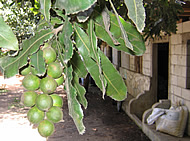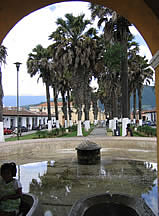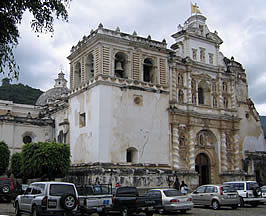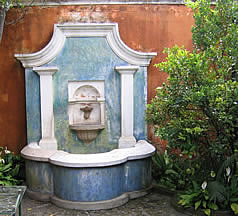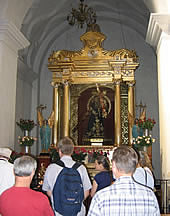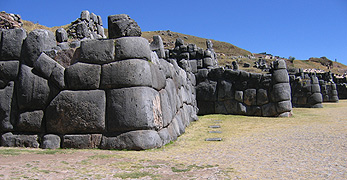
|
Andrzej Gutek was a Professor of Mathematics and an
artist. He passed away in 2015, shortly after retiring from Tennessee
Technological University. His MS in Mathematics (1974) and PhD in Topology
(1981) were from the University of Selesia in Kotowice, Poland. His
publications focused on Topology,
Functional Analysis, and the relationship between Mathematics and Art.
He spent the 2000/2001 academic year at the University of Dschang in
Cameroon as a Fulbright scholar, later authoring articles and a paper
about the crafts of Cameroon.
|
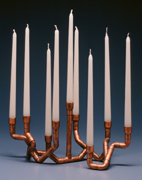 |
Andrzej was inspired to
make candle holders when he visited Mark Smith's wind chime studio.
Andrzej's first candelabra was made from copper pipes left over from
a plumbing project. He used a torch, copper pipes, solder, and imagination
to fabricate it. The candelabra on the left was one of his favorites
and received an Honorable Mention Award in The Best of Tennessee
Crafts 2000 Biennial Exhibit. The copper surface was sealed with polyurethane.
The surface of the candelabra on the right
has a greenish patina produced by applying a mixture of ammonia, salt,
water and copper sulphate. The surface was then sealed with polyurethane.
|
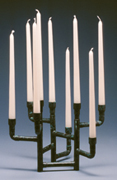 |
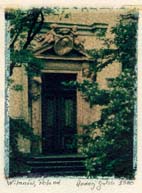 Wilanow, Poland Image Transfer |
Polaroid image and emulsion transfer captivated Andrzej when Cathy Stewart introduced him to the process in 1999. By varying exposure time, imbibe time, and colors, the same original image can result in very different transfers. The image on the polaroid film's release paper (normally discarded) can actually be transferred to another piece of paper to create another photograph. The emulsion of the photo can be lifted off and transferred, too. For more about emulsion transfer, please look at Andrzej's tutorial and photo transfer galleries at Transfer Gallery, Doors of the World, Flowers, and Guatemala. |
Chair Spring,
emulsion transfer |
|
From Andrzej's "Math is Fun! Mathematics is one of those human endeavors that mainly requires brain power, and a little time. It can be entertaining, frustrating, satisfying, relaxing, very easy and very complicated. Sometimes it is possible to do a lot with a little effort. Sometimes a lot of effort is rewarded with no results. As in so many other areas, mathematics is subject to the universal law of achievement:
The study of mathematics can be made less frustrating by an appropriate choice of textbooks. There is no "one size fits all" approach. Some prefer to begin with a lot of examples and no theory, yet others begin by learning the concepts. Here, the preference is on concepts. This approach is described by the first law of learning:
The following may help with the classroom instruction:
From Mark Twain:
|
|
Andrzej enjoyed researching "real world" math. During the
summer of 2006 he learned about "Maya Mathematics" in Guatemala from
Dr. Christopher Powell and Dr. Ed Barnhart of the
Maya Exploration Center.
To the right is a picture of a Maya Day-Keeper preparing for the calendar ceremony. | 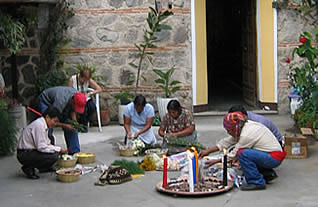 |
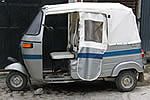 |
Before the class, Andrzej spent two weeks learning
Spanish at a language school in Antigua. It was the beginning of the
rainy season, and on a few occasion the roads became roaring rivers
of water and mud. At those times the local taxi,
"tuk tuk", was very helpful.
|
|
|
| Maya mathematics class participants visited Guatemala City, Antigua, Maya ruins and a museum in El Baul, Panajachel, Santiago Atitlan, and Chichicastenango. Antigua is a vibrant city of parks, churches, fountains, and tourists. |
|
|
|
|
|
The ancient Maya are not gone! On the contrary, they
are present in every facet of Guatemalan life. A stroll through any
town makes this obvious. Proud of their heritage, they wear the traditional
costumes, worship their gods, and engage in both modern and traditional
activities.
|
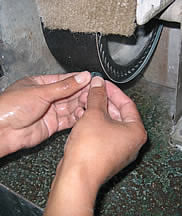 |
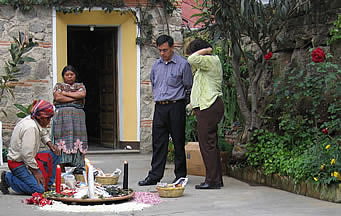 |
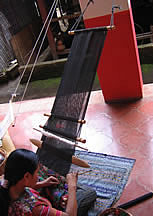 |
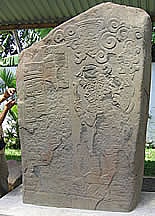 |
|
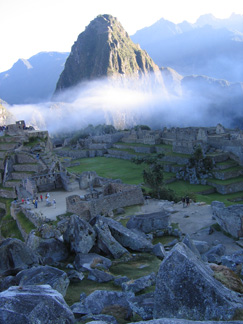 Sunrise at Machu Picchu |
|
Designed by the late Andrzej Gutek. Maintained by Carol
Ventura.
|


